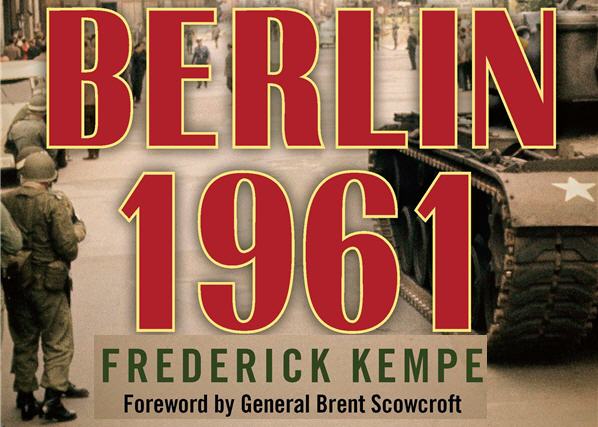
Michelle Jones of the Dallas Morning News recently wrote a review of Berlin 1961. The full text is below:
At the conclusion of Berlin 1961, his detailed chronicle of the events leading up to and following the construction of the Berlin Wall, Frederick Kempe describes the barrier as the “iconic image of what unfree systems can impose when free leaders fail to resist.”
By 1961, the relatively fluid border between the two halves of Berlin allowed large numbers of East Germans access to the West – either permanently or simply for work and consumer goods. It was also becoming an embarrassment and economic threat to the euphemistically named German Democratic Republic. So East German leader Walter Ulbricht pestered Soviet Premier Nikita Khrushchev for a solution, then came up with his own.
Ulbricht’s meticulous plan and its implementation were almost sinister in their efficiency. Beginning late Saturday, Aug. 12, East German officials began closing off streets, stopping trains and, in the wee hours of Sunday, unrolling stocks of barbed wire – bought from British and American suppliers – to blockade crossings. Kempe’s recounting of this and the ensuing desperation makes for compelling reading.
The diplomatic back-and-forth is somewhat less of a page-turning experience, though the action takes place in the Oval Office and the Kremlin, throughout Europe, and, of course, in Berlin. President John F. Kennedy and Khrushchev are star players in the Cold War drama. Ulbricht plays a supporting role, and there are scene-stealing appearances by West Berlin mayor Willy Brandt and West German Chancelor Konrad Adenauer. Lesser parts are played by a host of State Department officials, Allied leaders, American military personnel and the ordinary citizens – especially those of East Berlin.
“What is in danger of being destroyed here is that perishable quality called hope,” Edward R. Murrow is quoted as cabling to Kennedy. Kempe’s narrative includes a series of post-Wall escape attempts, among them the depressingly botched attempt of a young tailor who became the first victim of Ulbricht’s shoot-to-kill order in late August. Successful attempts included East German guard Hans Conrad Schumann’s leap over barbed wire (caught in a famous photograph) and an old woman who walked through Checkpoint Charlie during a standoff between unmarked Russian tanks and their American counterparts.
That confrontation in late October 1961 may have prompted Kennedy to put U.S. nuclear forces on special alert for the first time over a U.S.-Soviet issue, as Kempe writes, but it also helped the United States save face in what had come to be seen as a selling-out of West Berlin and the concept of a reunified Germany.
For Kempe and many observers then and now, the actions of an indecisive, inexperienced American president in his first days in office had given the shrewd Soviet premier license to do as he pleased in Berlin and elsewhere.
Kempe argues this set in a motion a chain of events that included the Cuban missile crisis of 1962 – an event that, along with Kennedy’s rousing “Ich bin ein Berliner” speech the following summer, he covers in the book’s epilogue.
Image: berlin1961-cropped.jpg
